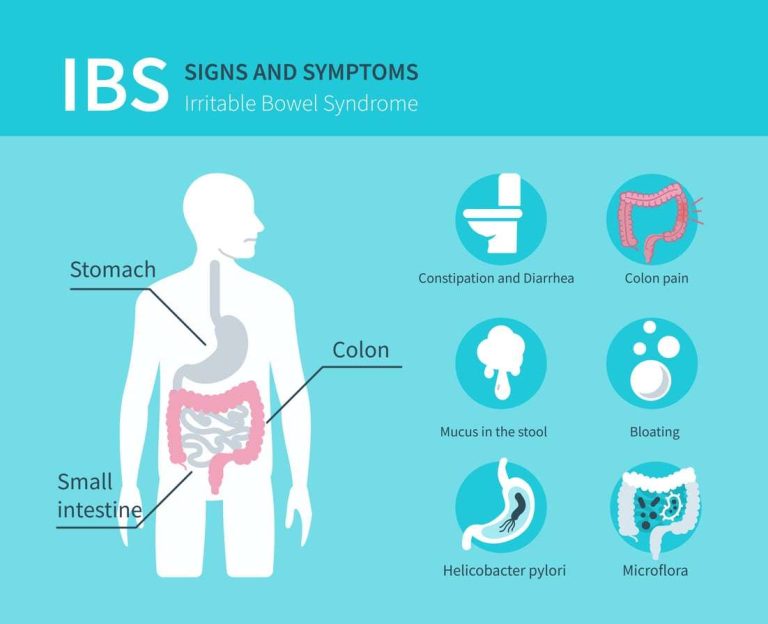Lacto-Fermentation of Vegetables and Fruits
For all those that want to eat healthily, they know the value of lacto-fermented foods. The following was taken from Sally Fallon and Mary Enig’s excellent book entitled: Nourishing Traditions: The Cookbook That Challenges Politically Correct Nutrition and the Diet Doctorates, available from amazon.com.
It may seem strange to us that, in earlier times, people knew how to preserve vegetables for long periods without the use of freezers or canning machines. This was done through the process of lacto-fermentation. Lactic acid is a natural preservative that inhibits putrefying bacteria. Starches and sugars in vegetables and fruits are converted into lactic acid by the many species of lactic-acid-producing bacteria. These lactobacilli are ubiquitous, present on the surface of all living things and especially numerous on leaves and roots of plants growing in or near the ground. Man needs only to learn the techniques for controlling and encouraging their proliferation to put them to his own use, just as he has learned to put certain yeasts to use in converting the sugars in grape juice to alcohol in wine.
The ancient Greeks understood that important chemical changes took place during this type of fermentation. Their name for this change was “alchemy.” Like the fermentation of dairy products, preservation of vegetables and fruits by the process of lacto-fermentation has numerous advantages beyond those of simple preservation. The proliferation of lactobacilli in fermented vegetables enhances their digestibility and increases vitamin levels. These beneficial organisms produce numerous helpful enzymes as well as antibiotic and anticarcinogenic substances. Their main by-product, lactic acid, not only keeps vegetables and fruits in a state of perfect preservation but also promotes the growth of healthy flora throughout the intestine. Other alchemical by-products include hydrogen peroxide and small amounts of benzoic acid.
A partial list of lacto-fermented vegetables from around the world is sufficient to prove the universality of this practice. In Europe the principle lacto- fermented food is sauerkraut. Described in Roman texts, it was prized for both its delicious taste as well as its medicinal properties. Cucumbers, beets and turnips are also traditional foods for lacto-fermentation. Less well known are ancient recipes for pickled herbs, sorrel leaves and grape leaves. In Russia and Poland one finds pickled green tomatoes, peppers and lettuces. Lacto- fermented foods form part of Asian cuisines as well. The peoples of Japan, China and Korea make pickled preparations of cabbage, turnip, eggplant,
cucumber, onion, squash and carrot. Korean Kim chi, for example, is a lacto- fermented condiment of cabbage with other vegetables and seasonings that is eaten on a daily basis and no Japanese meal is complete without a portion of pickled vegetable. American tradition includes many types of relishes—corn relish, cucumber relish, watermelon rind—all of which were no doubt originally lacto-fermented products. The pickling of fruit is less well known but, nevertheless, found in many traditional cultures. The Japanese prize pickled umeboshi plums, and the peoples of India traditionally fermented fruit with spices to make chutneys.
Lacto-fermented condiments are easy to make. Fruits and vegetables are first washed and cut up, mixed with salt and herbs or spices and then pounded briefly to release juices. They are then pressed into an air tight container. Salt inhibits putrefying bacteria for several days until enough lactic acid is produced to preserve the vegetables for many months. The amount of salt can be reduced or even eliminated if whey is added to the pickling solution. Rich in lactic acid and lactic-acid-producing bacteria, whey acts as an inoculant, reducing the time needed for sufficient lactic acid to be produced to ensure preservation. Use of whey will result in consistently successful pickling; it is essential for pickling fruits. During the first few days of fermentation, the vegetables are kept at room temperature; afterwards, they must be placed in a cool, dark place for long-term preservation.
It is important to use the best quality organic vegetables, sea salt and filtered or pure water for lacto-fermentation. Lactobacilli need plenty of nutrients to do their work; and, if the vegetables are deficient, the process of fermentation will not proceed. Likewise if your salt or water contains impurities, the quality of the final product will be jeopardized. Lacto-fermentation is an artisanal craft that does not lend itself to industrialization. Results are not always predictable. For this reason, when the pickling process became industrialized, many changes were made that rendered the final product more uniform and more saleable but not necessarily more nutritious. Chief among these was the use of vinegar for the brine, resulting in a product that is more acidic and not necessarily beneficial when eaten in large quantities; and of subjecting the final product to pasteurization, thereby effectively killing all the lactic-acid- producing bacteria and robbing consumers of their beneficial effect on the digestion.
About one inch of space should be left between the top of your vegetables with their liquid and the top of the jar, as the vegetables and their juices expand slightly during fermentation. Be sure to close the jars very tightly.
Lacto-fermentation is an anaerobic process and the presence of oxygen, once fermentation has begun, will ruin the final product.
In general, a room temperature of about 72 degrees will be sufficient to ensure a lactic-acid fermentation in about two to four days. More time will be needed if your kitchen is colder and less if it is very warm. After two to four days at room temperature, the jars should be placed in a dark, cool spot, ideally one with a temperature of about 40 degrees. In days gone by, crocks of lacto-fermented vegetables were stored in root cellars or caves. A wine cellar or small refrigerator kept on a “warm” setting is ideal; failing that, the top shelf of your refrigerator will do. Lacto-fermented fruit chutneys need about two days at room temperature and should always be stored in a refrigerator.
Lacto-fermented vegetables increase in flavor with time—according to the experts, sauerkraut needs at least six months to fully mature. But they also can be eaten immediately after the initial fermentation at room temperature. Lacto-fermented vegetable condiments will keep for many months in cold storage but lacto-fermented fruits and preserves should be eaten within two months of preparation.
Some lacto-fermented products may get bubbly, particularly the chutneys. This is natural and no cause for concern. And do not be dismayed if little spots of white foam appear at the top of the pickling liquid. They are completely harmless and can be lifted off with a spoon. The occasional batch that goes bad presents no danger — the smell will be so awful that nothing could persuade you to eat it. The sign of successful lacto-fermentation is that the vegetables and fruits remained preserved over several weeks or months of cold storage. Lactic-acid fermented vegetables and fruit chutneys are not meant to be eaten in large quantities but as condiments. They go beautifully with meats and fish of all sorts, as well as with pulses and grains. They are easy to prepare, and they confer health benefits that cannot be underestimated.
Scientists and doctors today are mystified by the proliferation of new Viruses — not only the deadly AIDS virus but the whole gamut of human viruses that seem to be associated with everything from chronic fatigue to cancer and arthritis. They are equally mystified by recent increases in the incidence of intestinal parasites and pathogenic yeasts, even among those whose sanitary practices are faultless. Could it be that in abandoning the ancient practice of lacto-fermentation and in our insistence on a diet in which everything has been pasteurized, we have compromised the health of our intestinal flora and made ourselves vulnerable to legions of pathogenic microorganisms? If so,
the cure for these diseases will be found not in vaccinations, drugs or antibiotics but in a restored partnership with the many varieties of lactobacilli, our symbionts of the microscopic world.
Let’s take a look at some specific recipes for making Sauerkraut, whey and other goodies.
SAUERKRAUT (Traditional)
This is how to make one quart of Sauerkraut: 1 medium cabbage, cored and shredded 1-tablespoon caraway seeds
1-tablespoon sea salt
4 tablespoons whey (if not available, use an additional 1 tablespoon salt)
In a bowel, mix cabbage with caraway seeds, sea salt and whey. Pound with a wooden pounder or a meat hammer for about 10 minutes to release juices. Place in a quart-sized, wide-mouthed mason jar and press down firmly with a pounder or meat hammer until juices come to the top of the cabbage. The top of the cabbage should be at least 1 inch below the top of the jar. Cover tightly and keep at room temperature for about 3 days before transferring to cold storage. The sauerkraut may be eaten immediately, but it improves with age.
LATIN AMERICAN SAUERKRAUT (Cortido)
This will make 2 quarts:
1 large cabbage, cored and shredded
1-cup carrots, grated
2 medium onions, quartered lengthwise and very finely sliced
1 tablespoons dried oregano
1⁄4 – 1⁄2 teaspoon red pepper flakes
1-tablespoon sea salt
4 tablespoons whey (if not available, use an additional 1 tablespoon salt).
This delicious spicy condiment goes beautifully with Mexican and Latin American food of all types. It is traditionally made with pineapple vinegar but can also be prepared with whey and salt. Like traditional sauerkraut, cortido improves with age.
Make as for traditional sauerkraut, cover tightly and keep at room temperature for about 3 days before transferring to cold storage.
GINGER CARROTS
Makes 1 quart:
4 cups grated carrots, tightly packed
1 tablespoon freshly grated ginger
1-tablespoon sea salt
4 tablespoons whey (if not available, add an additional 1 teaspoon salt).
These are the best introduction to lacto-fermented vegetables – the taste is delicious and the sweetness of the carrots neutralise the acidity that some people find disagreeable when they are first introduced to lacto-fermented vegetables. Ginger carrots go well with rich foods and spicy meats.
In a bowel, mix all ingredients and pound with a wooden pounder or a meat hammer to release juices. Place in a quart-sized, wide-mouth mason jar and press down firmly with a pounder or meat hammer until juices cover the carrots. The top of the carrots should be at least 1 inch below the top of the jar. Cover tightly and leave at room temperature about 3 days before transferring to cold storage.
WHEY
One of the easiest ways of making whey is as follows: 1-quart best quality whole natural yoghurt
This is a quick and easy method that is not temperature sensitive, and you get to make cream cheese simultaneously. You can use commercial yoghurt if it is of the very best quality, containing no sweeteners or fillers. Place the yoghurt in a strainer lined with cheesecloth or a clean linen dishtowel, placed over a bowl. Cover with a plate and leave at room temperature for 12 to 24 hours, while the whey runs out.
After the whey has run out of the bowl, you may tie up the cheesecloth or linen towel with the milk solids inside, being careful not to squeeze. Tie this little sack to a wooden spoon placed across the top of the bowl or pitcher so that more whey can drip out of the bag. When the bag stops dripping, the cheese is ready. Store whey in a mason jar and cream cheese in a covered glass container. Refrigerated, the yoghurt cheese will keep for about 1 month and the whey for about 6 months.
Read other interesting articles such as:










